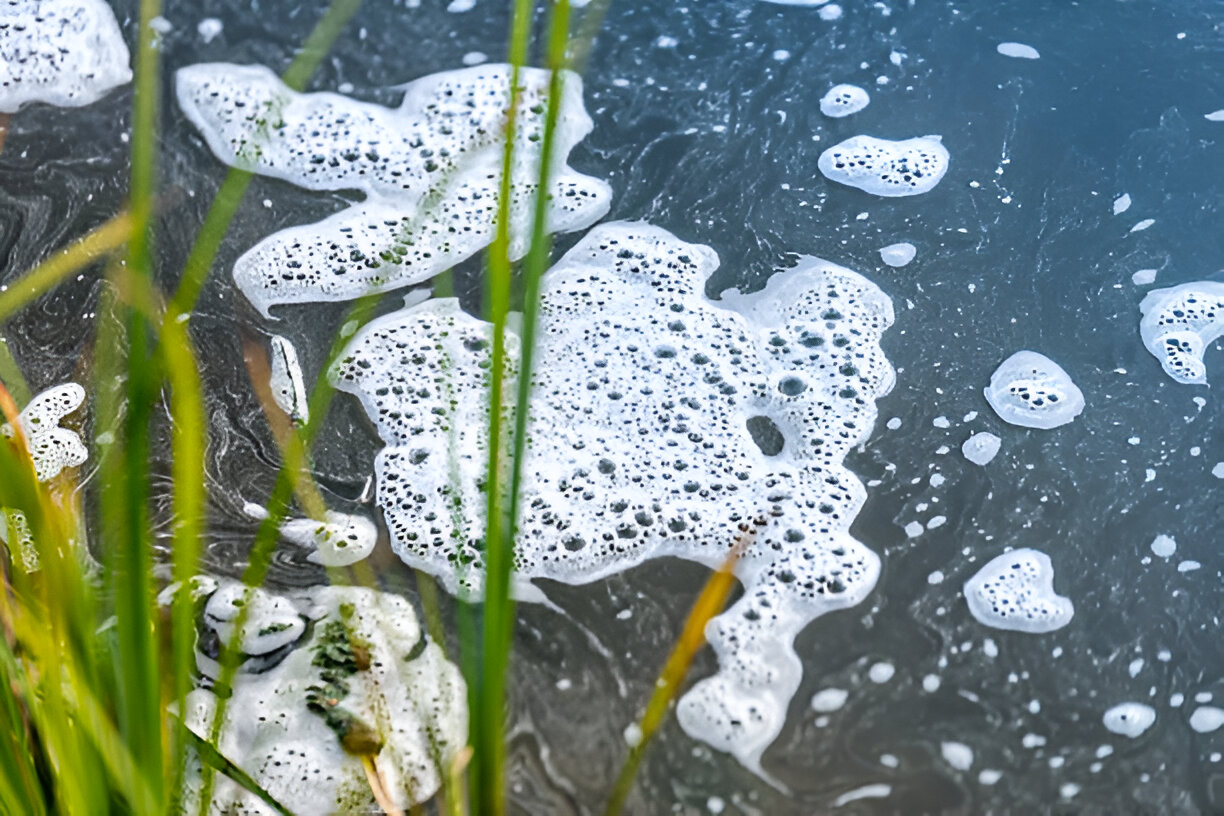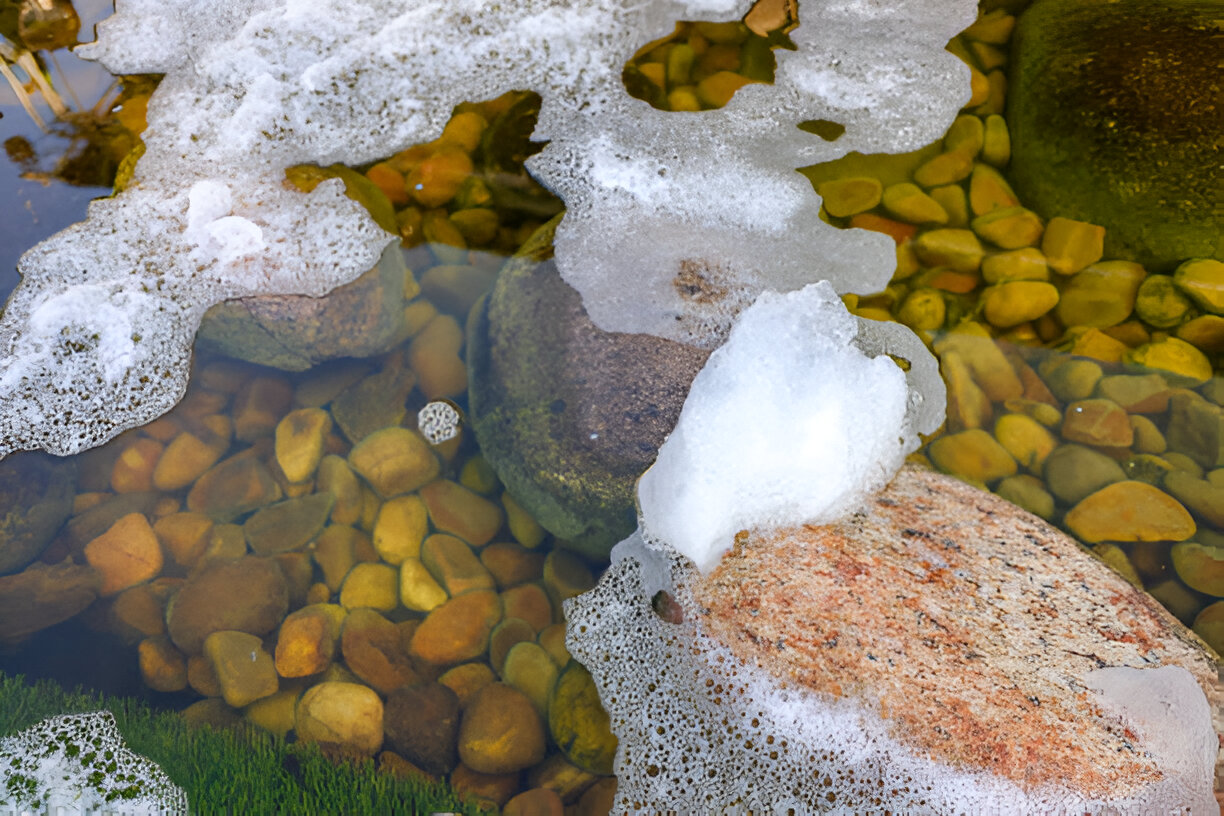The appearance of your pond has transformed into a milky foam layer resembling a cappuccino although you share this issue with many other pond owners. The occurrence of pond foam affects many water features yet sporadic foam levels remain safe but ongoing foam layers might indicate fundamental water quality issues in the pond system.
That Pond Guy assists pond owners in removing the complexity of their water quality needs. Our company implements both filtration solutions and natural treatment methods to achieve clear water and healthy fish throughout every season.
And when it comes to preventing foam, reliable equipment like “Oase Pond pumps” can play a big role in keeping water circulating and oxygen-rich — two key factors in foam prevention.
What Causes Foam on Your Pond?
Organic compounds dissolving into water with air will create foam whenever pond features such as fountains stir up these substances. Bubbles persist on surfaces instead of quickly dissipating because of proteins and other dissolved organic compounds (DOCs).
Common sources of these DOCs include:
- Uneaten fish food and fish waste
- Decaying plant material and fallen leaves
- Poorly maintained or undersized filtration
- Algal blooms or chemical residues.
Wet weather conditions and heatwave seasons increase both decomposition rates and runoff levels which intensify the foam accumulation in ponds. The presence of foam becomes more frequent when you observe elevated nutrient levels or when a pond contains an excessive fish population.
Is Pond Foam Harmful?
Initial foam outbreaks are normally safe to ignore but they signify declining water quality conditions that endanger fish populations. Existence of foam in water points to high levels of organics that decrease oxygen and disrupt your pond ecosystem.
How to Remove and Prevent Foam

1. Perform Regular Water Changes
Partial water changes (10–20%) every few weeks help dilute pollutants and reduce foam-causing compounds.
2. Clean Out the Sludge
The pond base contains decomposing material in the sludge layer. Gently remove pond debris with a vacuum or net device to maintain healthy bacteria populations.
3. Keep Fish Numbers in Check
Avoid overstocking. As a rule of thumb, limit fish to 60cm of adult fish per square metre of pond surface.
4. Use a Natural Sludge Treatment
Products like Envii Sludge Klear or Sludge Buster introduce beneficial bacteria that digest built-up organic matter — which can actually cause a temporary increase in foam before improving conditions long term.
5. Upgrade or Maintain Your Filtration
High-end filter systems with mechanical biological and UV sterilisation features eliminate suspended particles from water while preventing nutrient accumulation. Your system functions optimally when you perform routine maintenance.
Foam Control Starts with Good Pond Practice
You should purchase pond netting to stop leaves from entering your water feature while using only pond-safe products around your water feature area. Check your pond water with Envii Pond Test Strips to monitor the key parameters including pH and nitrate as well as nitrite.
Pond foam serves as an indication that your pond needs some care and attention even though it appears safe. Affordable pond improvement steps combined with appropriate equipment allow you to recover your pond’s attractiveness while sustaining its environmental health.




